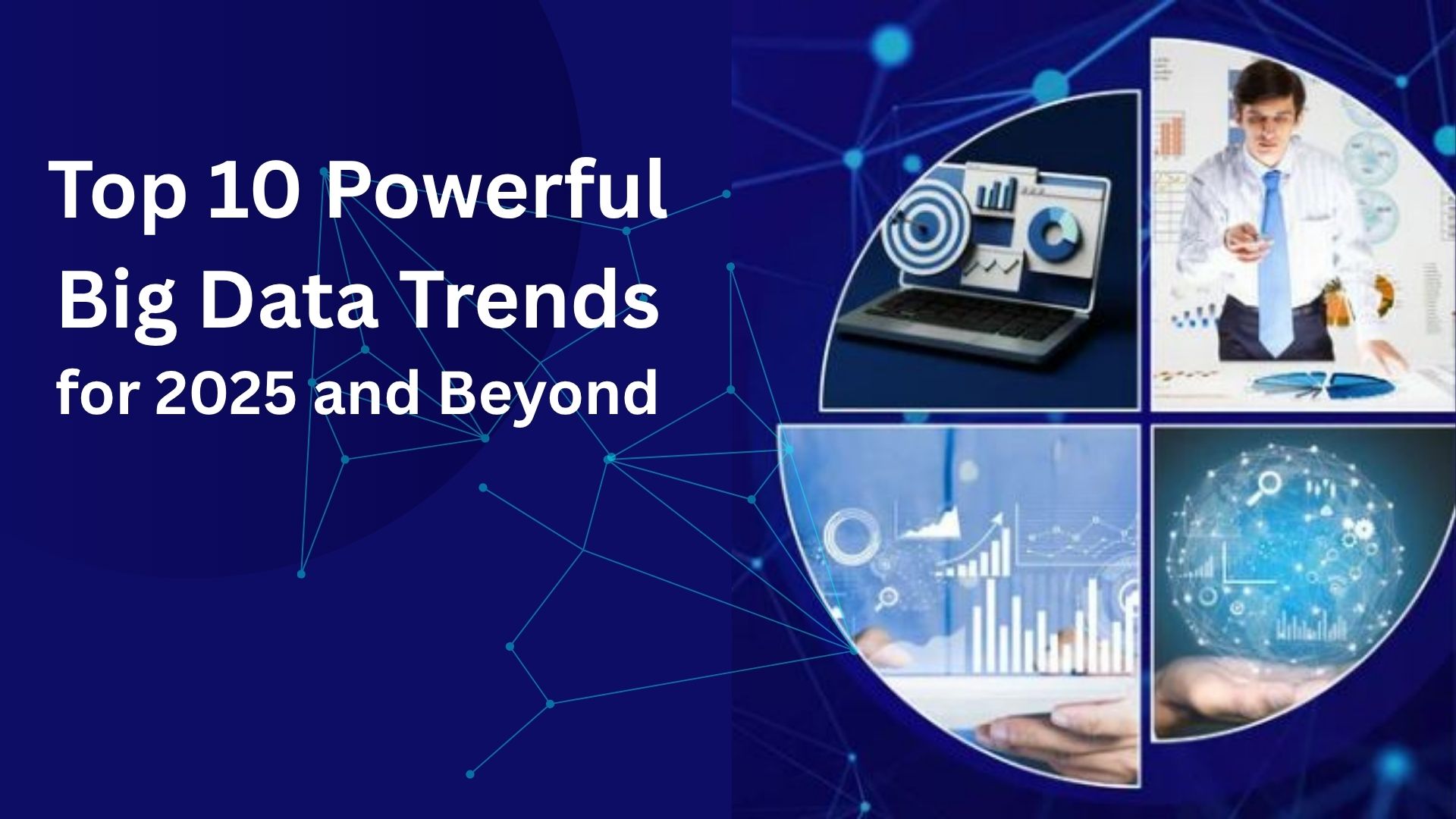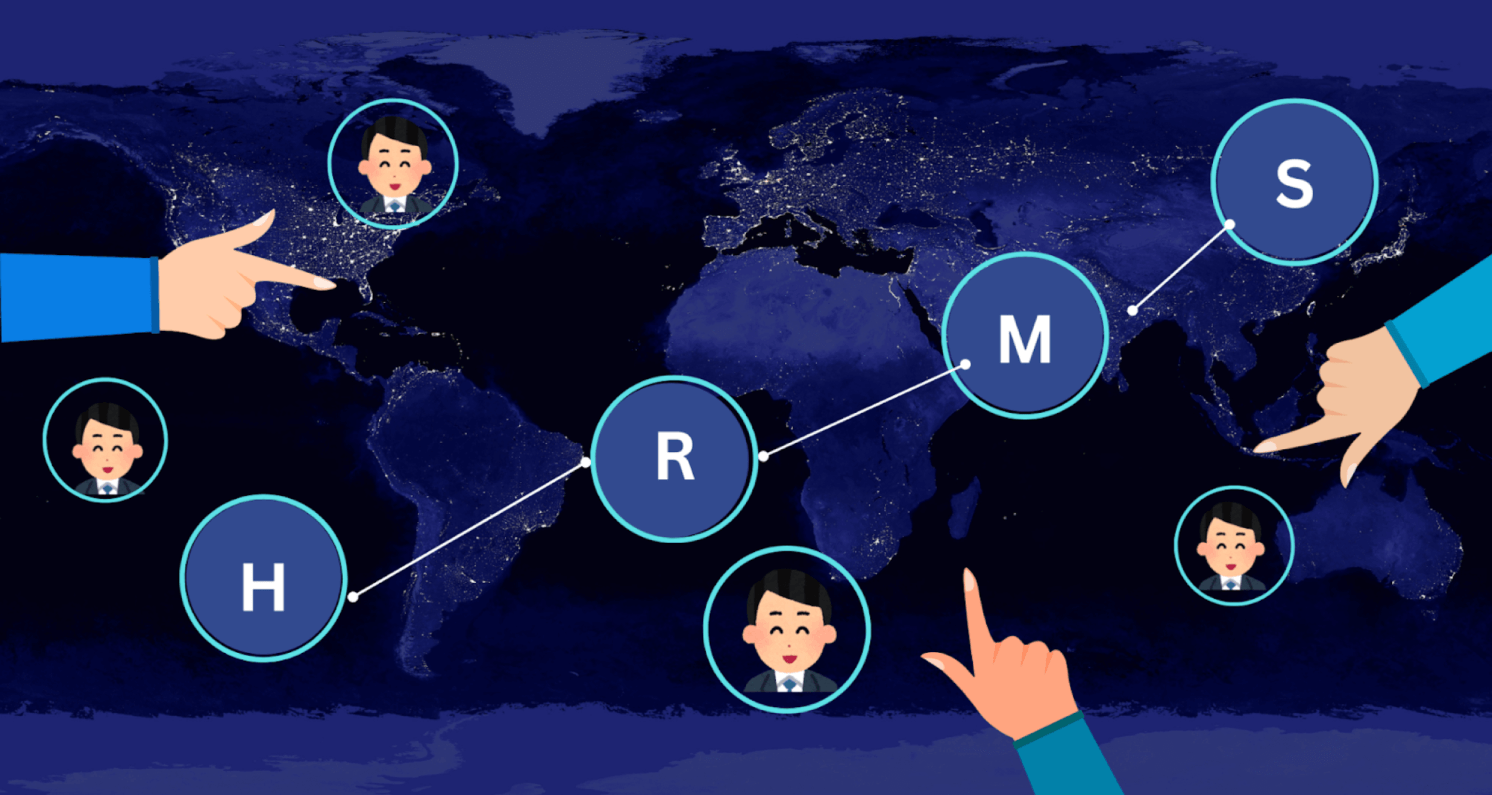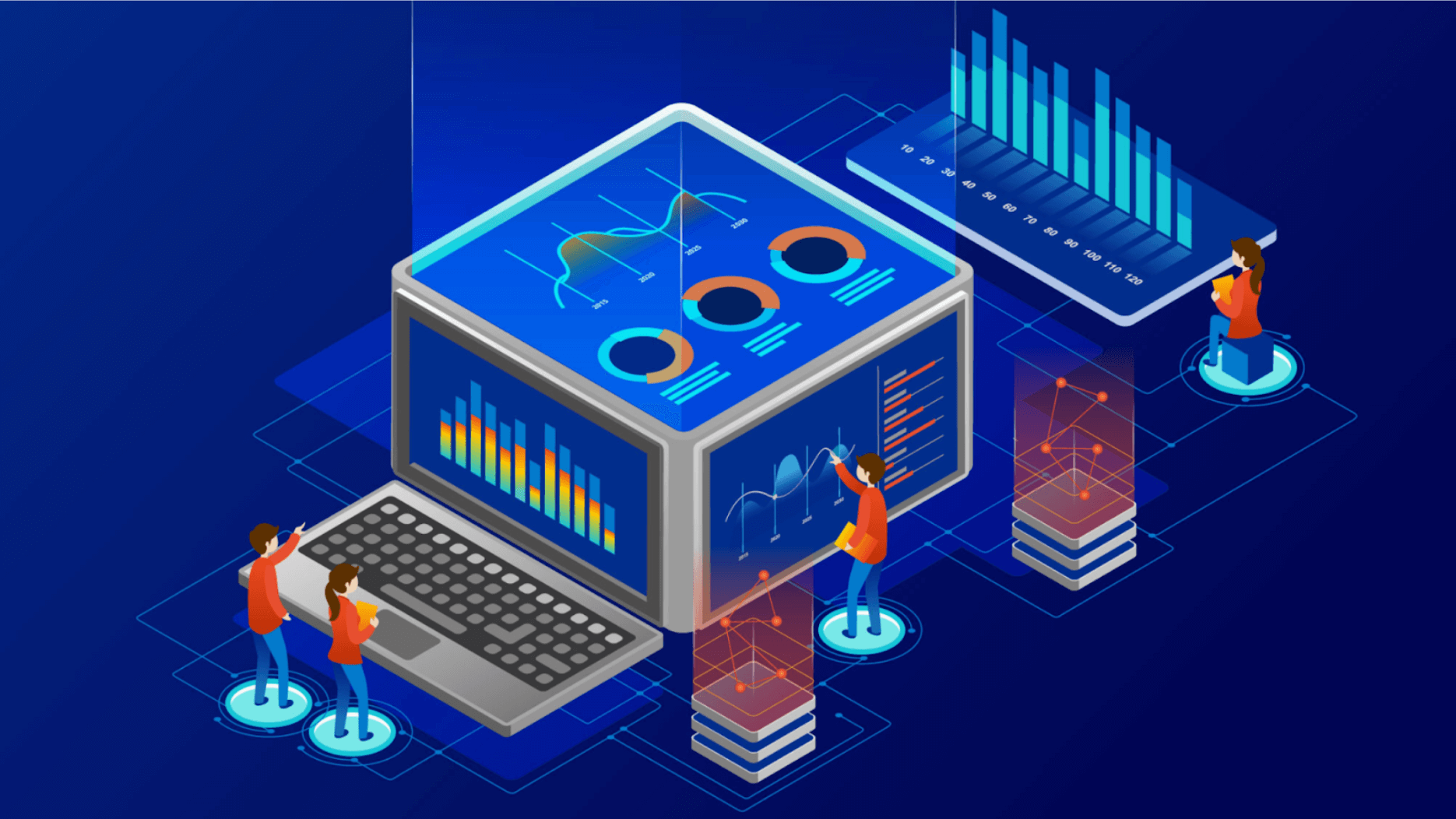Table of Contents:
- 1. Big Data Consulting Services
- 2. Data trends 2025
- 3. Big Data Trends 2025
- 4. Big data services
In today's world, digital transformation makes Big Data a key element for innovation, efficiency, and competitiveness. We use data to track user behavior and improve industrial operations, and the amount of data generated is enormous.
As we look to 2025 and beyond, we see changes in how we collect, analyze, and use data, influenced by new technologies and rising societal expectations.
So in this blog, we will be discussing the top 10 Big Data trends 2025 that will shape the data-driven world in 2025 and frame the future of business, governance, and everyday life.
Growing IoT Networks
The spread of the Internet of Things (IoT) has ushered in a data explosion. From wearable fitness trackers and smart refrigerators to industrial sensors and connected cars, IoT is generating an enormous pool of real-time data sources. In 2025, we anticipate more than 30 billion connected devices across the world, each pumping precious data into centralized or edge-based analytics platforms.
These IoT networks play a vital role in sectors like healthcare, where patient monitoring devices create real-time streams of data, or agriculture, where precision farming is enabled by smart sensors.
The key challenge in the future will be to process the data effectively. The answer? Edge computing—which processes data near the source—will minimize latency and bandwidth usage while enabling real-time decision-making.
Moreover, integration with AI will enable IoT systems not just to gather data but also to understand and act on it independently. The union of IoT and Big Data is only becoming more powerful
More Approachable Artificial Intelligence :
Artificial Intelligence (AI) has historically been linked with sophisticated algorithms and high-level data science. However, in 2025, AI democratization is happening. Due to easy-to-use platforms and no-code/low-code AI solutions, non-technical professionals can also tap into the potential of machine learning models.
Business users can do sentiment analysis, detect anomalies, and create forecasts without typing a line of code. Solutions such as AutoML (automatic machine learning) make it easier to build models, train, and deploy them. AI is thus more scalable across departments so that marketing teams, HR practitioners, and supply chain managers can make decisions based on data by themselves.
We are also experiencing deeper integration of natural language processing (NLP) into analytics platforms, enabling users to pose questions in simple English—e.g., "What were the top products sold last quarter?"—and instantly get data-supported answers.
Use Case Scenarios of AI:
- Chatbots: Chatbots are intelligent computer programs that assist clients online. They can offer support, provide answers to frequently asked questions, and even assist with purchases.
- Predictive maintenance: AI is used by computers to predict when equipment may break down. This helps companies prevent issues by fixing them before they break.
- Fraud Detection: Artificial Intelligence detects fraudulent transactions. By preventing money theft, it shields companies from financial loss.
Rise of Predictive Analytics
While descriptive analytics informs us of what has occurred, predictive analytics can inform us about what is most likely to occur next. This transition from hindsight to foresight is revolutionary. Companies in all sectors are now putting money into models that can predict customer churn, product demand, or financial risk with stunning accuracy.
In retailing, predictive analytics drives targeted marketing campaigns by forecasting individual customer actions. In logistics, it optimizes delivery routes and forecasts inventory needs. Even governments are using it to predict public health patterns or economic changes.
As the world becomes increasingly equipped with more advanced machine learning models and greater quality data, predictive analytics will emerge as a common feature and no longer a high-end capability to allow organizations to remain proactive and competitive in an ever-evolving market.
Real-life applications of predictive analytics:
- Fraud detection is the use of sophisticated mathematics to identify fraudulent transactions and prevent financial loss.
- Predictive maintenance is the process of estimating when machines may break so that repairs can be made before they happen.
Cloud Migration of Dark Data
Dark data is data that has been gathered but never touched—emails, chat histories, call center calls, machine logs, and so on. Much of this data lies idle because it's not structured properly or because the right tools do not exist to handle it. But dark data holds Healthcare: Making educated guesses about potential patient outcomes and identifying those who may become ill. a vast amount of unrealized potential.
With the migration of old systems to cloud environments, companies are now finally starting to tap into this hidden data. Powerful cloud-native analytics and AI technologies now enable extracting insights from once inaccessible sources.
Additionally, cloud providers such as AWS, Microsoft Azure, and Google Cloud provide scalable storage and compute resources, enabling organizations to analyze massive amounts of dark data without making initial infrastructure investments.
In 2025, anticipate businesses turning dark data into a strategic asset, driving everything from customer insight programs to fraud prevention.
Rise of Chief Data Officers
As information becomes the key to business success, companies are institutionalizing their data strategies with the appointment of Chief Data Officers (CDOs). These officers are responsible for managing data as a business-critical asset, maintaining data quality, privacy compliance, and aligning data with enterprise objectives.
The CDO role is changing fast. Gone are the days when CDOs were merely focused on governance alone. The contemporary CDO is now a change agent—facilitating digital change, cultivating data culture, and sponsoring cross-functional collaboration. They collaborate with IT, marketing, product, and compliance groups to create maximum value for data with minimum risk.
In 2025, more companies, particularly in finance, healthcare, and public services, will create separate data offices, making governance a competitive strength.
Quantum Computing
Quantum computing, while yet to mature, holds the promise of transforming Big Data analysis. Conventional computers work in binary, but quantum systems employ qubits that are capable of representing and processing more than one state at a time. This feature renders quantum computers exponentially more efficient for some processes.
Envision streamlining an international supply chain with millions of variables, or simulating intricate molecular interactions for pharmaceutical discovery—efforts that take hours or are not possible today. Quantum computing would crack them in minutes.
Although we're still a couple of years from mass adoption, 2025 will witness great advancements in quantum cloud services and collaborations between quantum labs and Big Data firms. Look for quantum leaps in optimization, cryptography, and simulation that will increasingly redefine what's possible with data science.
Smarter and Tighter Cyber Security
With increasingly sophisticated cyberattacks and data breaches, companies are doubling up on data security. In 2025, cybersecurity initiatives are driven by Big Data itself, leveraging AI to identify threats, analyze behaviors, and act in real-time.
Behavioral analysis has the capability to detect anomalies indicative of insider threat or misuse of credentials. SIEM solutions infused with machine learning can filter through millions of log events to identify suspicious behavior in real time.
Compliance is the other major force. International data regulations such as GDPR, CCPA, and India's DPDP Act require secure and transparent management of user data. Accordingly, organizations are investing in zero-trust models, end-to-end encryption, and real-time auditing systems.
Big Data services are not only a target—it's also the best defense.
Open Source Data
The open-source movement has been a strong force in defining the Big Data ecosystem. In 2025, it will be an even larger factor as organizations seek to create scalable, flexible, and cost-effective solutions. Open source technologies such as Apache Hadoop, Apache Spark, Kafka, and Flink are broadly used for data ingestion, processing, and real-time analytics.
In addition to tools, open data—public datasets released by governments, NGOs, and educational institutions—is facilitating new research and innovation. Open transport and pollution data are used by urban planners to create smarter cities. Developers create AI models with open image and text datasets.
Open source promotes openness, collaboration, and pace of innovation, particularly for startups and academia, making it a key component of the Big Data future.
Data Democratization
Data democratization refers to making data available to all individuals in an organization, irrespective of technical skill. It's not just enough for data scientists alone to have access—nowadays, marketing analysts, salespeople, product managers, and even HR staff require real-time insights to make informed decisions.
By 2025, self-service analytics platforms such as Tableau, Power BI, and Looker will be pervasive, providing drag-and-drop dashboards and AI-driven insights. Embedded analytics within business applications such as CRMs, ERPs, and project management tools make sure that data is actionable across all levels.
However, democratization has its duties too. Companies have to invest in data literacy training so that their employees learn to interpret and utilize data both effectively and ethically.
Use Case Scenarios of Data Democratization
- Understanding Data: More people would be able to comprehend data better if it were made accessible to all. This implies that you can learn to use data effectively even if you're not an expert in it.
- Using Data to Make Decisions: When companies allow all of their employees to access and comprehend data, they are able to use that information to make more informed decisions. We refer to this as data-driven decision-making.
- Cooperation: Employees who share data can collaborate more effectively. Better decisions are made and the business expands when people can readily share their knowledge of data. One of the current data trends is this.
Data Ethics
As data collection grows, so do ethical concerns. Who owns the data? How is it being put to use? Is it fair and unbiased to make decisions in AI? Consumer awareness and regulatory scrutiny have grown in 2025, making data ethics central.
Responsible handling of data implies much more than mere compliance, including trust, transparency, and accountability from the entities dealing with data. Organizations have to guarantee that data is gathered with consent, used fairly, and stored in a secure environment.
The AI systems should be explainable and auditable, especially in high-stakes scenarios, such as hiring and lending.
In some forward-minded organizations, Data Ethics Boards are established, while some augment these boards' operations by evaluating algorithms for bias with AI Fairness 360. Ethical data operations form the bedrock for customer retention and societal responsibility.
Conclusion
Gone are the days when Big Data was a trendy technology. It is the basis of emerging business strategy, governance, and innovation. Moving toward 2025 and beyond, in the horizons of the meeting of IoT, AI, quantum, and ethical governance, the definition of impossibility is changing.
Those who embrace the new trends with data democratization, bolstering cybersecurity, and placing emphasis on predictive analytics will be the ones to succeed in their respective industries. At the same time, however, such entities must watch their data-driven power structures ethically and from a regulatory point of view.
The future is for those who can wisely collect data, analyze ethically, and think and act practically. Big Data isn't about the volume; it's about vision.
Ready to turn data into decisions?
Partner with BestPeers to acquire Big Data consulting services for your business. From predictive analytics to smart cloud migrations, our experts help you stay ahead of the curve.
Connect with BestPeers today and lead the future with data-driven intelligence.




